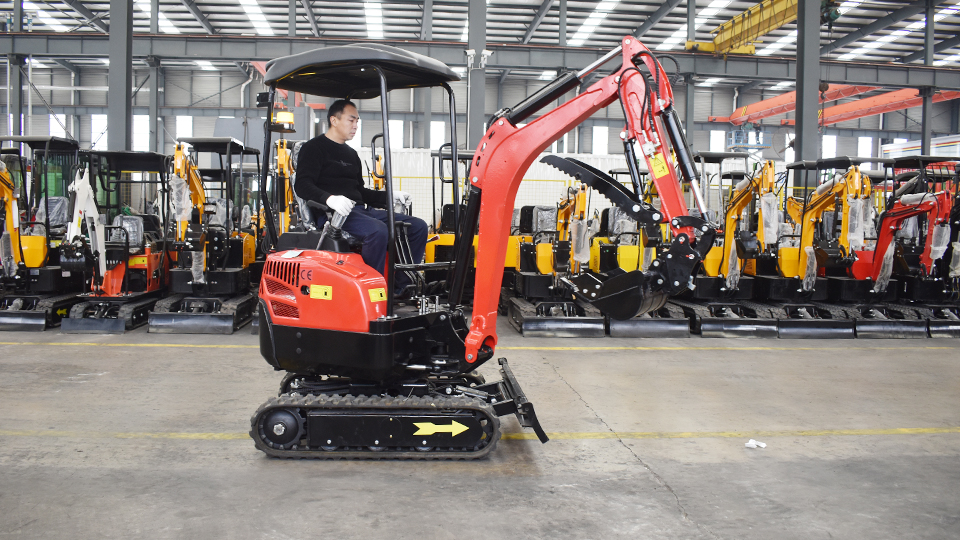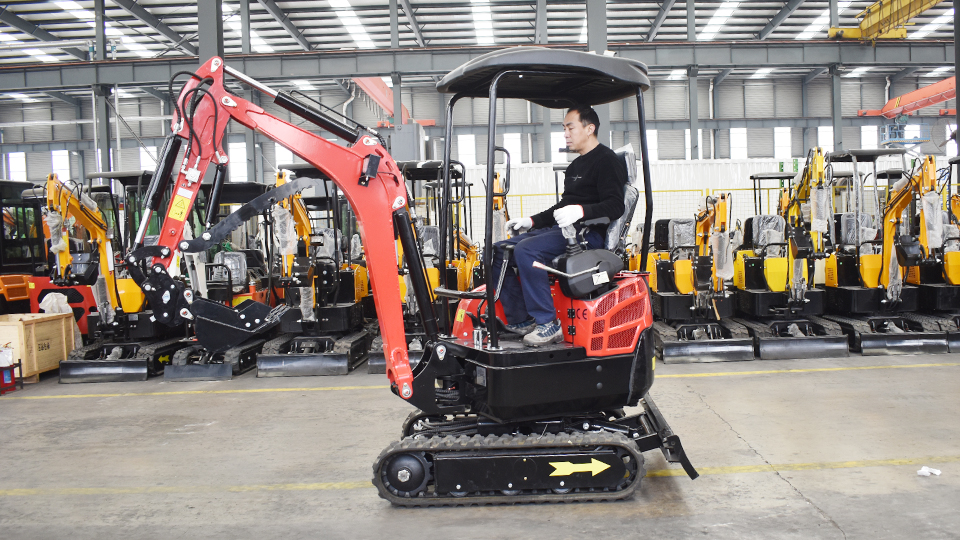Expanding Horizons: A Technical Deep Dive into Excavator Attachments
The excavator, a ubiquitous workhorse on construction sites and beyond, is renowned for its versatility. However, its true adaptability lies in the vast array of attachments that can be connected to its hydraulic arm, transforming it into a multi-functional machine capable of tackling diverse tasks. From digging and demolition to landscaping and material handling, the right attachment can significantly enhance an excavator's capabilities, boosting efficiency and reducing the need for multiple specialized machines. This technical article will explore the wide spectrum of excavator attachments available, delving into their design, functionality, and applications.
I. The Universal Interface: Quick Couplers
Before exploring individual attachments, it's crucial to understand the technology that enables their rapid interchange: the quick coupler. This hydraulic or mechanical device mounted on the excavator's dipper arm allows operators to quickly connect and disconnect various attachments without the need for manual pin removal and installation. Quick couplers significantly reduce downtime, increasing productivity and allowing a single excavator to perform a multitude of tasks on a job site. Different types of quick couplers exist, including pin-grabber, wedge-lock, and hydraulic versions, each offering varying levels of speed, security, and compatibility.
II. The Foundational Tool: Buckets
The most fundamental excavator attachment is the bucket, designed for digging, excavating, and moving loose materials. However, the term "bucket" encompasses a wide variety of specialized designs tailored for specific applications:
Standard Digging Buckets: General-purpose buckets with robust teeth, ideal for excavating soil, clay, and softer rock. Their shape and tooth configuration are optimized for efficient material penetration and fill.
Heavy-Duty Buckets: Reinforced with thicker steel and more aggressive teeth, these buckets are designed for tougher digging conditions involving harder rock, abrasive materials, and demolition debris.

Rock Buckets: Featuring extremely durable construction, wear-resistant materials, and specialized tooth patterns, rock buckets are built to withstand the extreme forces encountered when excavating fractured or solid rock.
Grading Buckets: Wider and shallower than digging buckets, grading buckets have a smooth cutting edge for leveling surfaces, backfilling trenches, and spreading materials evenly. Some grading buckets feature a tilt mechanism for enhanced versatility.
Trenching Buckets: Narrow buckets designed for digging clean and precise trenches for laying pipes, cables, and drainage systems. Their narrow profile minimizes disturbance to the surrounding soil.
Clean-Up Buckets (Ditch Cleaning Buckets): Wide, often with a flat bottom and smooth cutting edge, these buckets are used for cleaning ditches, removing debris, and light grading work. Some feature a tilting mechanism for working on slopes.
Skeleton Buckets (Riddle Buckets): These buckets have a series of bars or a mesh bottom, allowing finer material (like soil) to fall through while retaining larger debris (like rocks and roots). They are useful for sorting and separating materials.
V-Buckets: Trapezoidal-shaped buckets designed for creating V-shaped trenches for drainage or utility lines.
III. The Forceful Breaker: Hydraulic Hammers
For tasks involving breaking through hard materials like concrete, asphalt, and rock, the hydraulic hammer (breaker) is an indispensable attachment. Powered by the excavator's hydraulic system, these powerful tools deliver high-impact blows to fracture and pulverize the target material. Different types of hammer points (moil, chisel, blunt) are available for specific applications. Hammers are crucial in demolition, road construction, quarrying, and mining operations.
IV. The Gripping Hand: Thumbs and Grapples
Attachments designed for grasping, lifting, and moving irregularly shaped objects are essential for demolition, forestry, and material handling:
Thumbs: Hydraulic or mechanical thumbs are mounted to the excavator's dipper arm and work in conjunction with a bucket. They act as a clamp, allowing the operator to grip and manipulate objects like logs, rocks, pipes, and demolition debris. Different thumb designs (rigid, progressive link) offer varying levels of gripping force and versatility.
Grapples: Specialized attachments with two or more independently operating jaws, grapples are designed for handling specific types of materials. Common types include:
Demolition Grapples: Robust grapples with wide, strong jaws for handling large and bulky demolition debris.
Material Handling Grapples: Versatile grapples with various jaw configurations for handling diverse materials like scrap metal, waste, and construction debris.
Log Grapples: Designed with curved tines for securely gripping and moving logs and timber. Some feature rotating capabilities for precise positioning.
Rock Grapples: Heavy-duty grapples with strong, interlocking tines for handling large and irregular rocks and boulders.
Sorting Grapples: Grapples with multiple, independently controlled tines, allowing for the selective picking and sorting of different materials.
V. The Drilling Specialist: Augers
For drilling holes in the ground, the auger attachment transforms the excavator into a powerful drilling machine. Augers consist of a rotating helical screw blade that bores into the soil or softer rock. They are commonly used for:
Fence Post Installation: Drilling precise holes for fence posts.
Foundation Drilling: Creating holes for piers and small foundations.
Tree Planting: Digging appropriately sized holes for planting trees and shrubs.
Utility Pole Installation: Drilling holes for utility poles.
Soil Sampling: Extracting soil samples for analysis.

Augers come in various diameters and lengths, with different bit designs for various soil conditions and applications.
VI. The Land Management Tools: Rippers, Mulchers, and Brush Cutters
Excavators can also be equipped with attachments for land clearing, vegetation management, and soil preparation:
Rippers: Featuring a single, heavy-duty tooth, rippers are used to break up hard or frozen ground, asphalt, and other compacted materials, making excavation easier. They are often used in site preparation and road construction.
Mulchers: These attachments use rotating teeth or blades to shred and grind vegetation, including trees, brush, and stumps. They are essential for land clearing, forestry management, and right-of-way maintenance.
Brush Cutters (Rotary Mowers): Similar to mulchers but designed for lighter vegetation, brush cutters use rotating blades to cut down grass, weeds, and small saplings. They are used for maintaining fields, roadside verges, and other overgrown areas.
VII. The Compaction Expert: Plate Compactors and Sheepsfoot Rollers
For achieving soil compaction in trenches and other confined areas, excavators can utilize:
Plate Compactors: Vibratory plates attached to the excavator's arm, used to compact soil, gravel, and asphalt. They are ideal for trench backfilling and small-scale compaction tasks.
Sheepsfoot Rollers: Cylindrical drums with protruding feet (lugs), used for compacting cohesive soils like clay. These attachments are typically dragged behind the excavator.
VIII. The Material Processing Powerhouse: Crushers and Pulverizers
In demolition and recycling applications, excavators can be equipped with attachments for processing materials on-site:
Concrete Crushers: These attachments use powerful hydraulic jaws to crush concrete structures into smaller, more manageable pieces for easier removal and recycling.
Pulverizers: Similar to crushers but designed to further reduce the size of concrete and other brittle materials into fine aggregate, facilitating material separation and recycling.
IX. The Lifting Specialist: Lifting Hooks and Vacuum Lifts
While not primarily lifting machines, excavators can be equipped for specific lifting tasks:
Lifting Hooks: Specialized hooks attached to the bucket or directly to the dipper arm, allowing the excavator to lift and move suspended loads within its lifting capacity. Strict safety regulations and load charts must be adhered to when using lifting hooks.
Vacuum Lifts: Attachments that use suction to lift and move smooth, flat materials like concrete slabs, pipes, and steel plates. They are often used in construction and pipeline installation.
X. The Versatile Additions: Tilting Buckets, Extendable Arms, and More
Beyond the core attachments, several other specialized tools can further enhance an excavator's versatility:
Tilting Buckets: Buckets with a hydraulic tilting mechanism, allowing the operator to angle the bucket independently of the dipper arm for precise grading and shaping work.
Extendable Arms: Hydraulic extensions that increase the excavator's reach, allowing access to deeper or more distant work areas.
Grading Beams: Long, straight attachments used for precise leveling and grading over larger areas.
Stump Grinders: Attachments with rotating cutting wheels designed to grind down tree stumps efficiently.
Snow Plows and Blowers: In regions with significant snowfall, excavators can be equipped with snow plows and blowers for clearing roads and work sites.
XI. The Importance of Matching Attachment to Machine and Task
The effectiveness and safety of using excavator attachments heavily depend on selecting the right attachment for the specific task and ensuring it is compatible with the excavator's size, hydraulic capacity, and operating weight. Overloading the excavator or using an incompatible attachment can lead to equipment damage, instability, and potential accidents. Always consult the excavator's and attachment's specifications and guidelines before operation.
XII. Conclusion: Unleashing the Excavator's Potential
The extensive range of attachments available transforms the excavator from a simple digging machine into a highly versatile and productive tool carrier. By understanding the functionality and applications of these attachments, contractors and operators can optimize their equipment utilization, reduce the need for multiple specialized machines, and enhance efficiency across a wide range of tasks. As technology continues to advance, the development of even more specialized and innovative excavator attachments will undoubtedly further expand the horizons of this essential piece of construction equipment. However, it is paramount to remember that proper training, adherence to safety regulations, and careful consideration of the task and equipment limitations are crucial for harnessing the full potential of excavator attachments safely and effectively.
Post time:Sep-25-2020
